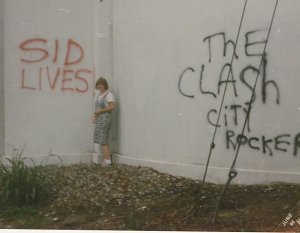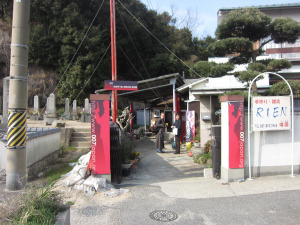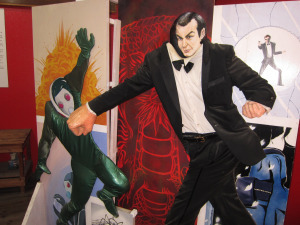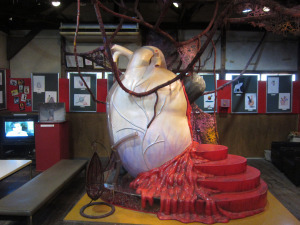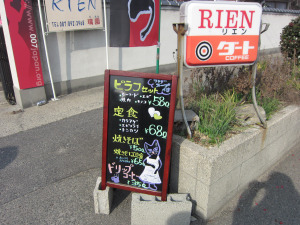Suzanne Kamata's Blog, page 6
March 14, 2013
The NEXT Next Big Thing
I was tagged for this meme by Caroline Grant, co-editor of the shiny new book, The Cassoulet Saved Our Marriage, which is a collection of essays about food and family. I’m waiting for the delivery guy to bring it even as I type! Anyway, this post is lon-n-n-g overdue, but here it is, finally. (And I realize I did this meme before, but I have many projects in the works!)
What is the title of your book?
The working title is Lilia’s World: Travels by Train, Plane, Bus and Wheelchair.
What is the one-sentence synopsis of your book?
Lilia’s World will be a mother/daughter-with-disabilities travel memoir.
What genre does your book fall under?
Travel memoir.
Where did the idea come from for the book?
From my daughter’s desire to travel. I figured if I could get a huge advance to write a book about traveling with my daughter a la Elizabeth Gilbert with Eat, Love, Pray, we’d be able to fulfill her dream of going to Paris. I haven’t gotten a huge advance yet, but I was awarded a grant for this project.
How long did it take you to write the first draft of the manuscript?
I’m still working on it! I hope to have a polished draft finished by October. Right now, I’m at about the halfway point, but I cheated a little, because I have incorporated essays that I’ve written over the years.
Who or what inspired you to write this book?
My daughter, and our mutual wanderlust.
Will your book be self-published or represented by an agency?
Hopefully represented by an agency!
What other works would you compare this book to within your genre?
French Milk by Lucy Knisley which is about a mother/daughter trip to Paris from the daughter’s point of view. It’s illustrated, as I hope my book will be. (Illustrated by my daughter, I mean.) Also, Father’s Day by Buzz Bissinger, about a road trip the author took with his son who has special needs, but my book will have manga and macarons and more exotic destinations.
What actors would you choose to play the part of your characters in a movie rendition?
Again, this is difficult to answer because of the shortage of biracial actresses. Maybe my daughter could play herself and Naomi Watts could play me? 
What else about your book might pique the reader’s interest?
This is sort of the true life version of my forthcoming YA novel Gadget Girl (which I will be blogging about here heavily shortly, as the reviews, etc. come in). Sort of like life imitating fiction. My daughter and I are going to Paris in one week! We’ll be taking lots of notes, and my daughter will be sketching.
The idea of this meme is that I tag five more writers, and have them answer and ask the same questions. So I tag…YOU.


January 13, 2013
Seeing the “Monet” at the Otsuka Museum of Art
Last weekend my daughter and I ventured to the nearby Otsuka Museum of Art in Naruto. My husband read somewhere that this museum, which houses ceramic reproductions of many of the world’s famous paintings, was voted “the most satisfying art museum in Japan” by Japanese visitors.
[image error]
A ceramic reproduction of “La Japonaise” by Claude Monet – one of my favorite paintings and the cover of my most recent book!
I’d been there once before, when it first opened. Everything smelled new, like chemicals, so it was difficult to suspend disbelief and pretend that I was looking at the real thing. I thought the whole place was kind of cheesy, to be frank. Plus, the entrance fee (3,000 yen for adults, or about US$45 at today’s exchange rates) was prohibitively expensive. However, I thought it might be a good way for my daughter to get some exposure to great art, and I thought she was finally old enough to enjoy such as outing.
Since its opening, many fun new features have been added, such as the robot tour guide.

The Sistine Hall with robot.
The museum covers four floors, and we arrived quite late, so we didn’t make it through all of the exhibits. I thought it was best not to hurry my daughter past the things that interested her. We spent about an hour just on antiquities!
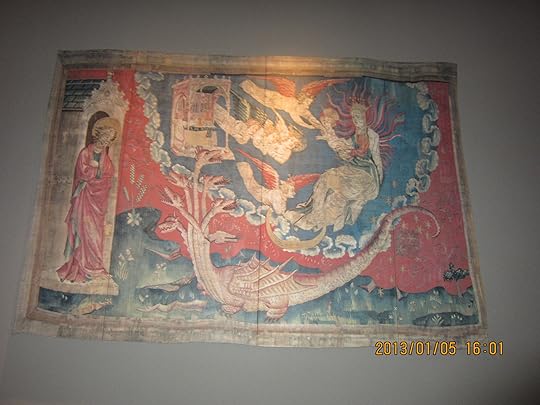
A dragon from antiquity.
We did manage to view the ceramic reproduction of Monet’s Water Lilies. Hopefully, on our next art outing she’ll have a chance to see the real thing!
[image error]
Me and the “Monet.”


December 30, 2012
The Next Big Thing
I have been invited by Soniah to answer questions about my current book (or WIP), and then to tag five other authors about their Next Big Thing. Here goes!
What is the title of your book?
Gadget Girl: The Art of Being Invisible
Where did the idea come from for the book?
From my daughter. When she was small, I imagined taking her on a mother-daugther trip to Paris when she turned about 12-14, and then I recalled being very difficult myself at that age, and not getting along with my mother.
What genre does your book fall under?
Young adult contemporary. I think slightly younger readers and adult readers would enjoy it as well. I read part of an earlier version of this story to an audience of adults at a bar as part of the Four Stories reading series in Osaka, and they seemed to enjoy it.
Which actors would you choose to play your characters in a movie rendition?
Aiko – This is a little bit tough because my main character is biracial, and I can’t think of a lot of biracial actresses at work in Hollywood these days. But maybe Emily Kaiho, who is half Japanese, and half American.
Laina/Mom – Angelina Jolie, because I imagine it would be somewhat overwhelming to have a beautiful do-gooder mother like her, when you’re trying to stay under the radar.
Dad – Takuya Kimura. He’s probably too much of a pretty boy to play an indigo farmer in Shikoku, but in real life he’s the father of a child with special needs, so I think this role would resonate for him.
Herve – Maybe a young Alain Delon?
What is the one-sentence synopsis of your book?
Fourteen-year-old Aiko Cassidy, an aspiring manga writer/artist with special needs, goes on a trip to Paris with her sculptor mother and finds out the truth about her father.
Is your book self-published or represented by an agency?
This book will be published in May 2013 by GemmaMedia.
How long did it take you to write the first draft of your manuscript?
It started out as a novella, so I guess a couple of months. But I worked on it, expanding and revising again and again, for four years.
What other books would you compare this story to within your genre?
We’re billing it as Anna and the French Kiss meets Stoner & Spaz. It also has some similarities to Justine Chen Headley’s North of Beautiful and Laura Resau’s notebook series.
Who or what inspired you to write this book?
See above.
What else about your book might pique the reader’s interest?
As I mentioned, it started out as a novella, which was published in Cicada, and won the SCBWI Magazine Merit Award for Fiction.
Here are five authors I’ve tagged to tell you about their Next Big Thing:
Liz Sheffield, whose short stories, essays and articles have been published in many national publications.
Novelist and essayist Anjali Enjeti whose excellent essay “Fade to Brown” appears in Call Me Okaasan .
Literary Mama columnist Katherine J. Barrett.
Thersa Matsuura, fellow expat-in-Japan and author of Robe of Feathers.
Karen A. Chase, author of Bonjour 40: A Paris Travel Log (40 years, 40 days, 40 seconds).
Thank you to Soniah Kamal for tagging me!


December 2, 2012
The Paris Project
My thirteen-year-old daughter wants to go to France. She plucks at her shirt and signs that she wants to go shopping in Paris, fashion capital of the world. She gazes at me with her brown eyes, puts her hands together as if to pray, and says, “Iaaiii!” Ikittai! I want to go!
“How did you learn about shopping in Paris?” I ask he
“I saw it on TV,” she signs.
Okay, so maybe she watches too much TV and reads too many comic books, but she picks up a lot. And I admit I may have helped to plant a seed in her head. When she was about three-years old, I began fantasizing about a mother-daughter trip to Paris, maybe when she turned fourteen. We’d pop into the Centre Pompidou and check out the funky shops in Le Marais. We’d sit in sidewalk cafes, drinking citron presse, and roam the galleries of the great museums. I even wrote a novel based upon this fantasy.
Of my two children, my daughter is the one who has inherited my wanderlust. When I suggest foreign travel to her twin brother, he moans about the long, boring plane ride, strange food, and having to miss baseball practice. But my daughter? She’s ready to go!
I didn’t fly on a plane myself until I was nineteen. I worked part-time and saved my money in order to go to France for a semester abroad, but I worry that my daughter won’t ever be able to go to Paris if she has to pay her own way. She has multiple disabilities and no one expects her to go to college. Although she is entitled to an allowance from the government, I fear it won’t be enough for all the trips that she wants to take.
“I’ll take you to Paris,” I tell her, forming a plan. “Just you and me.” I’ll teach her about art and history and the beginnings of sign language. We’ll watch the movie Marie Antoinette and then we’ll tour Versailles. We’ll eat French food and take an elevator up the Eiffel Tower.
“Paris, later,” she signs. “First, I want to go to Disneyland.”


November 14, 2012
Letters from a Young Writer
Recently I’ve been revisiting some stories that I wrote back in the 80s and 90s. To help myself get in the mood, I’ve been reading letters that I wrote to my friend, Helene, who has saved them all these years. I realize that even then, I was writing for posterity. I believed in my future as a writer, and so did Helene, bless her heart.
I came across this passage in a letter written (in very messy handwriting!) when I was twenty years old:
“I’m working on a short story. I’m trying to inject some Southernness into it. It’s set in a wasteland. No hope, whatsoever. There’s no reason to believe in anything, but idealism persists. I can’t decide if the statement I’m making is that you should hope no matter what, and avoid cynicism or the only way to keep yourself safe and alive is to shield yourself from reality. I prefer to believe that it’s an optimistic piece. I’ll send it to you later for critique. It’s based on real things – things that really happened – dead girls, doomed love, a lost dog.
“In other news, I have a cold, and I’ve lost five pounds since I saw you last.”
The story that I wrote about here is actually one of the first that I ever published. It was called “Waiting,” and it appeared in the journal Grasslands Review and also in The Abiko Literary Quarterly Rag here in Japan.
I’ve actually been tinkering with it again over the past couple of years, trying to turn it into a verse novel. We’ll see how that goes. And by the way, it is about hope.


October 21, 2012
I am AI, We are AI (and other thoughts about indigo)
I have been thinking about indigo a lot lately.
My forthcoming novel, Gadget Girl: The Art of Being Invisible, is about a biracial girl whose father is an indigo farmer and dyer in Tokushima. The inspiration for this is rooted in an interview I did about ten years ago with indigo farmer/textile artist Rowland Ricketts III, an American who apprenticed with dyers and farmers in Tokushima. At the time of our interview, he was living in Shimane Prefecture, where his Japanese wife, Chinami, studied weaving, and where he continued to grow and dye indigo.
Here is the end of my published article:
Eventually, he hopes to collaborate with Chinami, dyeing fabrics that she has woven herself.
“We want to start with a handful of cotton seeds and indigo seeds and, with the help of nature, transform them into textiles.
Ricketts also has large-scale plans, and is trying to organize an exhibition of indigo in the United States. “I want to explain to Americans what Japanese indigo is, from sukumo, starting with the seeds.”
It’s still in the planning stages,” he says of the exhibition. “Nothing happens quickly – I learned that from farming.”
Now, Ricketts is growing and dyeing and teaching in Indiana. His full scale exhibition has been achieved. Today, my daughter and I took in his indigo installation, the final event in a multi-faceted program – I am Ai, We are Ai. It’s always good to know that with hard work and dedication, dreams do indeed come true.


September 15, 2012
The Beautiful One Has Come in The Japan Times
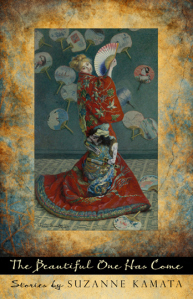 My short story collection, The Beautiful One Has Come, was reviewed in The Japan Times. Hooray!
My short story collection, The Beautiful One Has Come, was reviewed in The Japan Times. Hooray!
You can read the review here.
You can buy a copy from Powells here or from Amazon here or from Barnes and Noble here.


August 21, 2012
Teen Otaku Association
 My daughter Lilia and I just returned from our first international mother-daughter trip ever! The two of us went back to the States, leaving her brother and father behind. Although we missed them, we had a great time.
My daughter Lilia and I just returned from our first international mother-daughter trip ever! The two of us went back to the States, leaving her brother and father behind. Although we missed them, we had a great time.
A highlight of our visit (aside from hanging out with the relatives, of course) was attending the Anime Festival at Richland County Public Library in Columbia, South Carolina. In the morning and afternoon, we watched a variety of anime with the Teen Otaku Association, a bunch of smart, savvy young adults and college students who love manga, anime, and Japanese culture in general. One thirteen-year-old girl even brought onigiri (rice balls wrapped with nori) that she’d made herself! Another girl came wearing a fluffy tail (part of her Cosplay costume).
During a lunch of delivered pizza, I gave a little chat about Japan, writing, and the anthology Tomo, to which I contributed a story, “Peace on Earth.” Afterward, we took a photo together.


March 18, 2012
Naoshima, Island of Art and…007?
I recently visited Naoshima, an island in the Inland Sea, for the first time. Formerly an industrial waste dumpsite, the island has been converted into an art lover’s mecca. I had a chance to visit a couple of art museums, as well as the delightfully kitschy 007 Museum, near the harbor.
Here is the entrance. Although I had to change out of my shoes and into slippers to view the Monet at the Chichu Art Museum (which has only three exhibits total, two of them inaccessible by wheelchair), this place invited visitors to step inside shoes and all. Paperbacks of James Bond novels, movie posters, and guns (movie props?) were encased in glass.
And there was this big heart thing, that must have something to do with the James Bond novel, “The Man with the Red Tattoo,” by Raymond Benson, which takes place partly on Naoshima.
Supposedly, Benson visited the island and loved it so much, that he set his book there, hoping that movie makers would then use the island as a film location. Although signatures are still being collected, Hollywood has yet to call.
There’s a little cafe connected to the museum. While not a “must-see,” the 007 Museum is free, and the perfect low-brow antidote to the “slippers only” exhibits up in the hills.


January 14, 2012
A Review of The Art of Hearing Heartbeats
The Art of Hearing Heart Beats begins, as many such books do, with a missing person, a box of keepsakes and a mysterious letter.
In this case, it’s a father who goes missing – a Burmese-born entertainment lawyer, married for 30 plus years to an American with whom he has two adult children. One day, he tells his wife and daughter, Julia, that he is going to Boston. He never comes back. Later, they discover that he actually went to Thailand, and they haven’t heard anything since.
His wife hands over the box of keepsakes which include a love letter written by her husband to a woman named Mi Mi in Burma, dated 1955, thirteen years before his daughter’s birth. With nothing to go on but an address in Burma, Julia sets out in search of the truth about her father.
In Burma, she happens to meet an astrologer, U Ba, who knows the story behind her father’s disappearance. Thus, the novel becomes a story within a story, a fable-like unfolding of the great love between a blind boy whose hearing becomes so acute that he can hear heart beats at a distance, and a girl with deformed feet whose songs cure eczema and bring good luck. This girl, Mi Mi, would later become a woman so beautiful that “there were men prepared to die in hopes of coming back into the world as one of her animals, a pig, a chicken or a dog.”
Fittingly, in a novel in which senses are so important, The Art of Hearing Heartbeats is rich with sensory details – the scent of eucalyptus and jasmine, the buzzing of flies, the beat of monastery drums, the taste of chicken curry and sugarcane juice. Sendker brings Burma alive for readers who have little knowledge of the country (which would include most of us). He also weaves superstitions and folk tales into the story, as Tea Obrecht did in THE TIGER’S WIFE, adding a tinge of magic realism.
I must admit that before I started reading, I thought the German origin of this novel indicated that it would be a difficult read. I was wrong. Sendker himself admits in an interview at the back of the book that he’s not a big fan of German novels, and that he’s more drawn to the works of Gabriel Garcia Marquez and Haruki Murakami. Sendker, it turns out, is a consummate storyteller. His story had me turning the pages rapidly, until the final satisfying end.
If I hadn’t known any better, I would have thought this book was originally written in English by an American woman. The translation is excellent.
This book, already a sensation in Europe, deserves to be read widely. I loved it.



